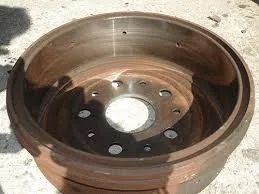
-
 Afrikaans
Afrikaans -
 Albanian
Albanian -
 Amharic
Amharic -
 Arabic
Arabic -
 Armenian
Armenian -
 Azerbaijani
Azerbaijani -
 Basque
Basque -
 Belarusian
Belarusian -
 Bengali
Bengali -
 Bosnian
Bosnian -
 Bulgarian
Bulgarian -
 Catalan
Catalan -
 Cebuano
Cebuano -
 Corsican
Corsican -
 Croatian
Croatian -
 Czech
Czech -
 Danish
Danish -
 Dutch
Dutch -
 English
English -
 Esperanto
Esperanto -
 Estonian
Estonian -
 Finnish
Finnish -
 French
French -
 Frisian
Frisian -
 Galician
Galician -
 Georgian
Georgian -
 German
German -
 Greek
Greek -
 Gujarati
Gujarati -
 Haitian Creole
Haitian Creole -
 hausa
hausa -
 hawaiian
hawaiian -
 Hebrew
Hebrew -
 Hindi
Hindi -
 Miao
Miao -
 Hungarian
Hungarian -
 Icelandic
Icelandic -
 igbo
igbo -
 Indonesian
Indonesian -
 irish
irish -
 Italian
Italian -
 Japanese
Japanese -
 Javanese
Javanese -
 Kannada
Kannada -
 kazakh
kazakh -
 Khmer
Khmer -
 Rwandese
Rwandese -
 Korean
Korean -
 Kurdish
Kurdish -
 Kyrgyz
Kyrgyz -
 Lao
Lao -
 Latin
Latin -
 Latvian
Latvian -
 Lithuanian
Lithuanian -
 Luxembourgish
Luxembourgish -
 Macedonian
Macedonian -
 Malgashi
Malgashi -
 Malay
Malay -
 Malayalam
Malayalam -
 Maltese
Maltese -
 Maori
Maori -
 Marathi
Marathi -
 Mongolian
Mongolian -
 Myanmar
Myanmar -
 Nepali
Nepali -
 Norwegian
Norwegian -
 Norwegian
Norwegian -
 Occitan
Occitan -
 Pashto
Pashto -
 Persian
Persian -
 Polish
Polish -
 Portuguese
Portuguese -
 Punjabi
Punjabi -
 Romanian
Romanian -
 Russian
Russian -
 Samoan
Samoan -
 Scottish Gaelic
Scottish Gaelic -
 Serbian
Serbian -
 Sesotho
Sesotho -
 Shona
Shona -
 Sindhi
Sindhi -
 Sinhala
Sinhala -
 Slovak
Slovak -
 Slovenian
Slovenian -
 Somali
Somali -
 Spanish
Spanish -
 Sundanese
Sundanese -
 Swahili
Swahili -
 Swedish
Swedish -
 Tagalog
Tagalog -
 Tajik
Tajik -
 Tamil
Tamil -
 Tatar
Tatar -
 Telugu
Telugu -
 Thai
Thai -
 Turkish
Turkish -
 Turkmen
Turkmen -
 Ukrainian
Ukrainian -
 Urdu
Urdu -
 Uighur
Uighur -
 Uzbek
Uzbek -
 Vietnamese
Vietnamese -
 Welsh
Welsh -
 Bantu
Bantu -
 Yiddish
Yiddish -
 Yoruba
Yoruba -
 Zulu
Zulu
Feb . 01, 2025 04:13
Back to list
drum and disc brake system
The evolution of braking systems in automobiles is a testament to human engineering and innovation. Among the most common braking mechanisms are drum and disc brake systems, each with distinct characteristics and specialized uses that cater to different driving needs. For those cultivating a deeper understanding of automotive brake systems, knowing how these two systems operate is crucial for both vehicle safety and performance optimization.
For consumers and auto manufacturers, the choice between drum and disc brake systems also extends beyond just performance and maintenance. It's interconnected with fuel efficiency and weight concerns. Drum brakes are lighter, which contrarily adds a beneficial effect on fuel efficiency and overall vehicle weight, a subtle yet persuasive factor for vehicle designers. Disc brakes, however, add more weight, but the safety benefits they provide often outweigh the drawbacks in various contexts. From an authoritative perspective, understanding the nuances of these braking systems aids in making informed decisions about vehicle purchases or modifications. Expertise in this area ensures that the right balance of performance, cost, and safety is achieved. Trustworthiness in product choice becomes paramount, as braking systems are critical safety components that impact not just the driver and passengers but also the surrounding environment during vehicle operation. Whether upgrading a vehicle, consulting on automotive design, or simply enhancing one’s knowledge base, the practical distinctions between drum and disc brake systems provide valuable insights. Their collaboration in many modern vehicles attests to a balanced approach to engineering that combines the best of both worlds, meeting varied consumer needs while prioritizing safety and performance.


For consumers and auto manufacturers, the choice between drum and disc brake systems also extends beyond just performance and maintenance. It's interconnected with fuel efficiency and weight concerns. Drum brakes are lighter, which contrarily adds a beneficial effect on fuel efficiency and overall vehicle weight, a subtle yet persuasive factor for vehicle designers. Disc brakes, however, add more weight, but the safety benefits they provide often outweigh the drawbacks in various contexts. From an authoritative perspective, understanding the nuances of these braking systems aids in making informed decisions about vehicle purchases or modifications. Expertise in this area ensures that the right balance of performance, cost, and safety is achieved. Trustworthiness in product choice becomes paramount, as braking systems are critical safety components that impact not just the driver and passengers but also the surrounding environment during vehicle operation. Whether upgrading a vehicle, consulting on automotive design, or simply enhancing one’s knowledge base, the practical distinctions between drum and disc brake systems provide valuable insights. Their collaboration in many modern vehicles attests to a balanced approach to engineering that combines the best of both worlds, meeting varied consumer needs while prioritizing safety and performance.
Prev:
Latest news
-
Rear Drum Brakes Maintenance TipsNewsAug.04,2025
-
Key Components Affecting Brake Drum FunctionNewsAug.04,2025
-
Important Inspection for Truck Drum BrakeNewsAug.04,2025
-
How to Prepare for Changing Rear Drum BrakesNewsAug.04,2025
-
Essential Tools for Cleaning Drum Brakes ProperlyNewsAug.04,2025
-
Brake Drum Function GuideNewsAug.04,2025
-
Safety Features of Red Brake DrumsNewsAug.01,2025
